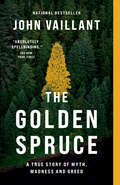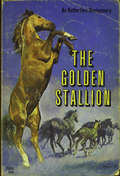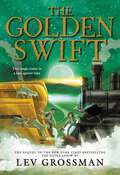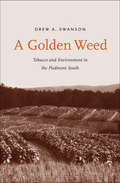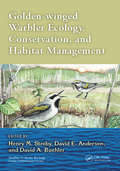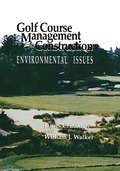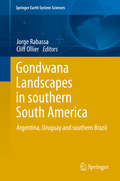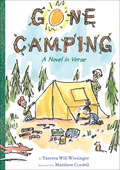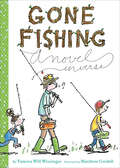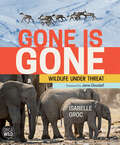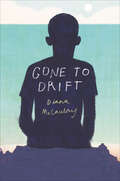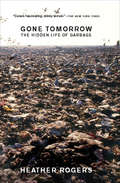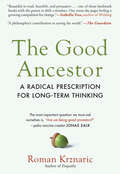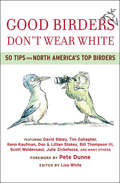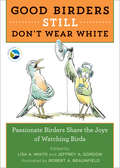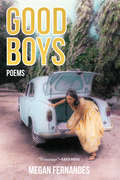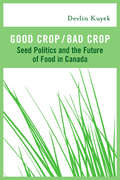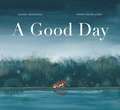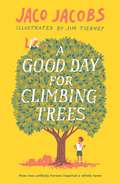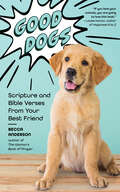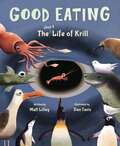- Table View
- List View
The Golden Spruce: A True Story of Myth, Madness and Greed
by John VaillantNATIONAL BESTSELLER • WINNER OF THE GOVERNOR GENERAL'S LITERARY AWARD FOR NON-FICTION • WINNER OF THE WRITERS&’ TRUST NON-FICTION PRIZE&“Absolutely spellbinding.&” —The New York TimesThe environmental true-crime story of a glorious natural wonder, the man who destroyed it, and the fascinating, troubling context in which this act took place. FEATURING A NEW AFTERWORD BY THE AUTHOROn a winter night in 1997, a British Columbia timber scout named Grant Hadwin committed an act of shocking violence in the mythic Queen Charlotte Islands. His victim was legendary: a unique 300-year-old Sitka spruce tree, fifty metres tall and covered with luminous golden needles. In a bizarre environmental protest, Hadwin attacked the tree with a chainsaw. Two days later, it fell, horrifying an entire community. Not only was the golden spruce a scientific marvel and a tourist attraction, it was sacred to the Haida people and beloved by local loggers. Shortly after confessing to the crime, Hadwin disappeared under suspicious circumstances and is missing to this day. As John Vaillant deftly braids together the strands of this thrilling mystery, he brings to life the ancient beauty of the coastal wilderness, the historical collision of Europeans and the Haida, and the harrowing world of logging—the most dangerous land-based job in North America.
The Golden Stallion
by Rutherford MontgomeryCharlie was determined to have the palomino for his very own. But Golden Boy was a wild stallion who loved his freedom. And he would fight before giving it up. Catching him wouldn’t be easy! An edition especially edited for younger readers of Rutherford Montgomery's Famous Horse Stories novel "The Capture of the Golden Stallion."
The Golden Stallion
by Theodore J. WaldeckThe clear, cold air of the mountain heights, the sense of space and freedom that is to be found in the peaks of the Sierras and their valleys, the thundering beauty and intelligence of wild horses--all this, and more, is to be found in The Golden Stallion, the first book with a North American background to be written by Theodore Waldeck, famous explorer and author of African and South American jungle stories. Young Bob, brought up by his rancher father to know and love horses, lives for the day when he can have one of his very own. Golden Blaze is the name he gives the beautiful wild horse which is captured for him, and their adventures together, with a surprise ending, form this thrilling story of life in the American West, a story which adds to Mr. Waldeck’s firmly established reputation for taking his readers on stimulating adventures.
The Golden Stallion to the Rescue: Golden Stallion #3 (Famous Horse Stories)
by Rutherford MontgomeryWhen Charley Carter’s mother tries to make some much-needed money for the family by inviting boys to spend the summer at the Bar L Ranch, Rodney, a boy with a passion for geology, is the only one who comes. As he learns about working on the ranch, he spends long periods of time alone, and more time visiting Golden Boy, the beautiful once-wild stallion who keeps the ranch’s mares together. But soon Charley discovers Rodney has a plan for his rich father, an oil man, to drill for oil in the wild mountain country, and Rodney arranges to buy Golden Boy and move him East. It looks like the Carters will lose their ranch and everything they value. Worse, Golden Boy is being left to die by Rodney’s horse trainer who believes the horse is a killer. Can Charley save his life and bring him home?
The Golden Swift (The Silver Arrow)
by Lev GrossmanIn this thrilling adventure in the New York Times bestselling Silver Arrow series, Kate and Tom must confront the limits of what even magic can do—all while trying to bring balance back to the world. A lot has changed for Kate in a year. She and Tom are now full-fledged conductors of the steam-powered, animal-saving Great Secret Intercontinental Railway. Life is good! Or good-ish, anyway. Her uncle Herbert has gone missing, and the worsening climate means that there are more and more animals that need help all the time. How many times does Kate have to save the world before it stays saved? And her real life isn&’t exactly perfect either. She flunked her audition for the junior high musical and got stuck in the chorus, while her archenemy Jag got a lead. So, out of desperation, Kate breaks the rules and takes the Silver Arrow out on an unsanctioned mission, to find Uncle Herbert and bring back balance to the world. But she quickly discovers she&’s not the only one on the Great Secret Intercontinental Railway. There&’s a mysterious train called the Golden Swift out there too, with an agenda of its own. Is it an ally? A rival? An enemy? A bit of all three? The question will turn Kate&’s world upside down, take her from the Scottish Highlands to the Australian outback to the bottom of the Bering Sea, and lead her straight on a collision course with the mysterious masters of the Great Secret Intercontinental Railway itself. Because when you're a human being fighting to save nature, are you the hero or are you the villain? There are no simple answers.
A Golden Weed
by Dr Drew A. SwansonDrew A. Swanson has written an "environmental" history about a crop of great historical and economic significance: American tobacco. A preferred agricultural product for much of the South, the tobacco plant would ultimately degrade the land that nurtured it, but as the author provocatively argues, the choice of crop initially made perfect agrarian as well as financial sense for southern planters. Swanson, who brings to his narrative the experience of having grown up on a working Virginia tobacco farm, explores how one attempt at agricultural permanence went seriously awry. He weaves together social, agricultural, and cultural history of the Piedmont region and illustrates how ideas about race and landscape management became entangled under slavery and afterward. Challenging long-held perceptions, this innovative study examines not only the material relationships that connected crop, land, and people but also the justifications that encouraged tobacco farming in the region.
Golden-winged Warbler Ecology, Conservation, and Habitat Management (Studies in Avian Biology)
by Henry M. Streby, David E. Andersen and David A. BuehlerGolden-winged Warblers (Vermivora chrysoptera) are migratory songbirds that breed in temperate North America, primarily in the Great Lakes region with remnant populations throughout the Appalachian Mountains, and winter in Central and northern South America. Their breeding range has contracted dramatically in the Appalachian Mountains and many populations have dramatically declined, likely due to habitat loss, competition and interbreeding with Blue-winged Warblers (Vermivora pinus), andglobal climate change.. As a result of population declines in much of the eastern portion of their breeding range, Golden-winged Warblers are listed as endangered or threatened in 10 U.S. states and in Canada and have been petitioned for protection under the U.S. Endangered Species Act. Published in collaboration with and on behalf of The American Ornithological Society, this volume in the highly-regarded Studies in Avian Biology series compiles extensive, current research on Golden-winged Warblers and summarizes what is known and identifies many remaining unknowns, providing a wealth of peer-reviewed science on which future research and listing decisions can be based.
Golf Course Management & Construction: Environmental Issues
by James C. Balogh William J. WalkerGolf Course Management & Construction presents a comprehensive summary and assessment of technical and scientific research on the environmental effects of turfgrass system construction and maintenance. Although the book focuses on golf courses, it also discusses turfgrass systems for residential and commercial lawns, parks, and greenways. The book is an excellent introduction to the concepts of nonpoint source environmental impacts of turfgrass management for turfgrass scientists and specialists, landscape and golf course architects, turfgrass system and golf course developers, golf course superintendents, environmental scientists, and land-use regulators.
Gondwana Landscapes in southern South America
by Jorge Rabassa Cliff OllierThis book presents extensive and new information on the geomorphology of cratonic areas of southern South America. It includes valuable data relating to recurrent controversies in general geomorphology beyond the boundaries of South America and reveals the great need to integrate many different aspects of geomorphology in regional studies. With the focus on ancient landscapes and especially on planation surfaces it addresses the question of what processes could form such huge features, and how they can be preserved for so long. Many of the papers include maps of planation surfaces or other geomorphic units. The volume brings together an up-to-date, state-of-the-art collection of information on South American geomorphology, and shows beyond doubt that geomorphology is on the same time scale as global tectonics, biological evolution and major climate change. Some of the papers describe ancient geomorphological features of areas that have never been studied or published before, while others describe regions which are totally unknown to the public. The scope of the book extends from tropical latitudes north of the Tropic of Capricorn, south to freezing Patagonia in the "roaring fifties", more than 3,500 km from north to south. Including over one thousand citations from geological and geomorphological literature, this volume will serve as a starting point for a whole new phase of studies of the fascinating landscape history of southern South America.
Gone Camping: A Novel in Verse
by Matthew Cordell Tamera Will WissingerHiking in the great outdoors, catching fish, watching the stars come out at night—camping is fun. Until it’s time to sleep. Then, Lucy wonders, what kinds of creatures lurk in the dark? With only her brother and grandpa as tent-mates, will Lucy be able to face her camping fears? Filled with a variety of poetic forms—from aubade to haiku—as well as exuberant art and helpful writing tips about rhyme and rhythm, this entertaining companion to the award-winning Gone Fishing is packed with family humor and adventure. So grab a flashlight and get settled in to experience the joy of campfires, s’mores, and storytelling!
Gone Fishing
by Earlene R. LongA father and son go fishing with a big fishing rod for daddy and a little one for the child.
Gone Fishing: A Novel in Verse
by Tamera Will WissingerNine-year-old Sam loves fishing with his dad. So when his pesky little sister, Lucy, horns in on their fishing trip, he’s none too pleased: “Where’s my stringer? / Something’s wrong! / The princess doll does not belong!” All ends well in this winsome book of poems—each labeled with its proper poetic form, from quatrain to tercet. Together the poems build a dawn-to-dusk story of a father-son bond, of sibling harmony lost and found—and most of all, of delicious anticipation. Charming line drawings animate the poetry with humor and drama, and the extensive Poet’s Tackle Box at the end makes this the perfect primer to hook aspiring poets of all ages.
Gone Fishing: A Novel (Into Reading, Trade Book #9)
by Tamera Wissinger Tamera Wizssinger Matthew CordellNIMAC-sourced textbook. Nine-year-old Sam loves fishing with his dad. So when his pesky little sister, Lucy, horns in on their fishing trip, he’s none too pleased. All ends well in this winsome book of poems—each labeled with its proper poetic form. Together the poems build a dawn-to-dusk story of a father-son bond, of sibling harmony lost and found—and, most of all, of delicious anticipation. Charming line drawings animate the poetry with humor and drama, and the extensive Poet’s Tackle Box at the end makes this the perfect primer to hook aspiring poets of all ages.
Gone is Gone: Wildlife Under Threat (Orca Wild #2)
by Isabelle GrocGone Is Gone looks at why species become endangered, how scientists are learning about endangered wildlife, what people are doing to conserve species and ways young people can help. The book is richly illustrated with unique photos that the author has taken over many years of observing endangered species in the field alongside the people who work to conserve them. Throughout the book the author shares enchanting encounters and personal field stories: watching narwhals socialize in the Canadian Arctic, ,getting close to a Laysan albatross raising chicks in a remote Hawaiian island, spotting a rhinoceros on safari, and even swimming with giant tortoises in the Galapagos Islands. Gone Is Gone will inform, intrigue and inspire readers to take small steps toward big changes for endangered species around the world.
Gone to Drift
by Diana McCaulay“McCaulay’s prose is lyrical. A solemn adventure about resolve, loyalty, and family, that gives readers insight into life in a small fishing community and brings to light the dangers marine life face in the wild.” — School Library Journal“The relationships between boy and elder, man and sea, crime and poverty all lift McCaulay’s first children’s novel into a different league. Beautiful.” — Kirkus Reviews (starred review)“The heartbreaking realism of this story of innocence lost at sea truly sets this novel apart.” — Bulletin of the Center for Children’s Books“This makes a good choice for adventure fans, the eco-conscious, and those hoping to understand the economic hardships faced by those who make their living from the sea.” — Booklist“Gone to Drift is a compelling coming-of-age story with a strong sense of place and culture.” — Voice of Youth Advocates (VOYA)
Gone Tomorrow: The Hidden Life of Garbage
by Heather RogersEat a take-out meal, buy a pair of shoes, or read a newspaper, and you're soon faced with a bewildering amount of garbage. The United States is the planet's number-one producer of trash. Each American throws out 4.5 pounds daily. But garbage is also a global problem; the Pacific Ocean is today six times more abundant with plastic waste than zooplankton. How did we end up with this much rubbish, and where does it all go? Journalist and filmmaker Heather Rogers answers these questions by taking readers on a grisly, oddly fascinating tour through the underworld of garbage.Said to "read like a thriller" (Library Journal), Gone Tomorrow excavates the history of rubbish handling from the 1800s to the present, pinpointing the roots of today's waste-addicted society. With a "lively authorial voice" (New York Press), Rogers draws connections between modern industrial production, consumer culture, and our throwaway lifestyle. She also investigates controversial topics like the politics of recycling and the export of trash to poor countries, while offering a potent argument for change.
The Good Ancestor: A Radical Prescription For Long-term Thinking
by Roman KrznaricFrom leading philosopher Roman Krznaric, an urgent call to save ourselves and our planet by getting to the root of the current crisis—society’s extreme short-sightedness As heard on NPR’s TED Radio Hour When Jonas Salk developed the polio vaccine, he refused to patent it—forgoing profit so that more lives could be saved. His radical generosity to future generations should inspire us, but leading philosopher Roman Krznaric sees the opposite happening: Our short-term, exploitative mindsets have “colonized the future,” leaving an inexcusable chasm between the haves and have-nots—and mounting existential threats—that have brought our species to the precipice of disaster. Yet Krznaric sees reason to hope. The urgent struggle for intergenerational justice calls for hugely ambitious solutions, from rewiring our growth-at-all-costs economy to giving voters of future generations a voice in our democracies. But at the heart of all these changes is one we can enact within ourselves: We must trade shortsightedness for long-term thinking. In The Good Ancestor, Krznaric reveals six practical ways we can retrain our brains to think of the long view and to shift our allegiance from this generation to all humanity—to save our planet and our future.
Good Birders Don't Wear White: 50 Tips From North America's Top Birders
by Robert A. Braunfield Tim Gallagher Kenn Kaufman Don Stokes Lillian Stokes Bill Thompson III Scott Weidensaul Julie ZickefooseDavid Sibley, Don and Lillian Stokes, and many more share their inside tips—and witty observations—on the birding life. The biggest names in birding dispense advice to birders of every level—on topics ranging from feeding birds and cleaning binoculars to pishing and pelagic birding—in these lighthearted essays accompanied by illustrations. Whether satirizing bird snobs or relating the traditions and taboos of the birding culture, this collection of wisdom is as chock-full of helpful information as it is entertaining. &“The book is a delight to read and will generate new enthusiasm for the hobby. The 25 black-and-white line drawings are hilarious.&” —Booklist
Good Birders Still Don't Wear White: Passionate Birders Share the Joy of Watching Birds
by Robert A. Braunfield Richard Crossley Pete Dunne Kenn Kaufman Michael O'Brien Bill Thompson III Julie ZickefooseAvid North American birders share wit, wisdom, advice, and what fuels their passion for birds. Birding gets you outside, helps you de-stress, exercises your body and mind, puts your day-to-day problems in perspective, and can be lots of fun. Birders know this, and in this collection of thirty-seven brief essays, birders from diverse backgrounds share their sense of wonder, joy, and purpose about their passion (and sometimes obsession). From the Pacific Ocean to Central Park, from the rainforest in Panama to suburban backyards—no matter what their habitat, what good birders have in common is a curiosity about the natural world and a desire to share it with others. In these delightful essays, each accompanied by an endearing drawing, devoted birders reveal their passion to be fulfilling, joyful, exhilarating, and maybe even contagious. Contributors include many well-known birders, such as Richard Crossley, Pete Dunne, Kenn Kaufman, Michael O'Brien, Bill Thompson, and Julie Zickefoose—and a portion of the proceeds goes to the American Birding Association, North America's largest membership organization for active birders.
Good Boys: Poems
by Megan FernandesIn an era of rising nationalism and geopolitical instability, Megan Fernandes’s Good Boys offers a complex portrait of messy feminist rage, negotiations with race and travel, and existential dread in the Anthropocene. The collection follows a restless, nervy, cosmically abandoned speaker failing at the aspirational markers of adulthood as she flips from city to city, from enchantment to disgust, always reemerging—just barely—on the trains and bridges and bar stools of New York City. A child of the Indian ocean diaspora, Fernandes enacts the humor and devastation of what it means to exist as a body of contradictions. Her interpretations are muddied. Her feminism is accusatory, messy. Her homelands are theoretical and rootless. The poet converses with goats and throws a fit at a tarot reading; she loves the intimacy of strangers during turbulent plane rides and has dark fantasies about the “hydrogen fruit” of nuclear fallout. Ultimately, these poems possess an affection for the doomed: false beloveds, the hounded earth, civilizations intent on their own ruin. Fernandes skillfully interrogates where to put our fury and, more importantly, where to direct our mercy.
Good Crop / Bad Crop: Seed Politics and the Future of Food in Canada
by Devlin KuyekIN RECENT YEARS Canadians have become more and more concerned about the origins oftheir food and the environmental impacts of pesticides in agriculture. What is less well knownis that pesticide corporations such as Monsanto and Du Pont have bought their way into the seed industry and are taking control of what was once the exclusive domain of farmers.In Good Crop / Bad Crop, Devlin Kuyek deftly examines the economic and environmental background of the modern seed trade from a Canadian perspective. Historically seeds were viewed more as public goods than as commodities, and plant breeding objectives were widely shared by scientists, governments, and farmers. Now that approach is changing; seeds have become increasingly commodified, and plant breeding has become subject to corporate priorities. Farmers and citizens in Canada, Kuyek points out, need to heed the hard-won lessons from the developing world, where farmers greatly damaged by the much-heralded approaches of theGreen Revolution are now taking steps to reclaim control over seed supplies, food security, and their futures.
A Good Day
by Daniel NesquensThe cat and the tiger are best friends. Every day, the cat enters the zoo and visits the tiger&’s cage. They talk about everything, but when the cat confesses that he&’d like to be big and strong like the tiger, he&’s shocked to learn that the tiger envies him for being free to go wherever he wants. The tiger has a plan to escape from the zoo and find his real home—all he needs is some help from his best friend. Animal lovers of all ages will fall in love with this fanciful story about friendship and freedom.
A Good Day for Climbing Trees
by Jaco Jacobs*Nominated for the 2019 CILIP Carnegie Medal* How two unlikely heroes inspire a whole town by fighting to save a tree Sometimes, in the blink of an eye, you do something that changes your life forever. Like climbing a tree with a girl you don't know. Marnus is tired of feeling invisible, living in the shadow of his two brothers. His older brother is good at breaking swimming records and girls&’ hearts. His younger brother is already a crafty entrepreneur who has tricked him into doing the dishes all summer. But when a girl called Leila turns up on their doorstep one morning with a petition, it&’s the start of an unexpected adventure. And finally, Marnus gets the chance to be noticed...
Good Dogs: Scripture and Bible Verses from Your Best Friend
by Becca AndersonAdorable dog photos paired with iconic Bible verses to warm your heart and give you guidance in times of need. Verses for Daily Meditation. This selection of inspiring, holy words will help you gain a greater understanding on subjects like faith, love, strength, peace, and knowledge. Becca Anderson, author of The Women&’s Book of Prayer and Prayers for Hard Times, knows you&’ll find the truth and hope you need guided by the Lord?and everyone&’s best friend in this Christian dog book.Good Dogs is the perfect Christian inspirational gift. In this book, you&’ll find: Thought-provoking verses for encouragement and meditationClarifying explanations on every pageBeautiful, heartwarming images of all your favorite dog breedsPerfect for readers of What&’s True about You, Zen Dogs, Color the Words of Jesus, or The Psalms in ColorPraise for Good Dogs&“If you love your animals, you are going to love this book. It will remind you that the bond we share with our pets is an expression of divine love.&” —Louise Hamon, author of Happiness A to Z
Good Eating: The Short Life Of Krill
by Matt LilleyCalifornia Eureka Silver Honoree award 2022 "To my delight, your average krill is a far stranger story of metamorphosis than anything our butterflies can come up with." - Elizabeth Bird, A Fuse 8 Production A fun exploration of a tiny animal at the base of the ocean food chain Just 2 inches long full-grown, this little guy is the foundation of the Southern Ocean food chain... “Hi. What are you? You appear to be an egg. You are an egg sinking. For many days, you sink. You sink a mile down, and you keep sinking down… down… until…” The unidentified narrator follows one krill among billions as it pursues its brief existence, eating and eating while metamorphosing from one thing into another and trying to avoid being eaten. Questions and advice are hurled at the krill on every page, but the krill never responds—because, after all, krill can’t talk, and this is nonfiction. Krill are the largest animals able to catch and eat phytoplankton, and they in turn are eaten by the largest animals ever to live on earth—blue whales—as well as by seals, penguins, and a host of others. In other words, krill are really good at eating, and they make really good eating. And that makes them the most important animals in the high-latitude oceans. As in The Whale Fall Café, Dan Tavis’s illustrations combine scientific accuracy with Nemo liveliness and humor. Our star krill is so good at gobbling up phytoplankton that he turns green, so we can pick him out from the crowd racing to escape a penguin’s beak or a blue whale’s gaping maw. The book has been reviewed and endorsed by global krill expert Dr. Stephen Nichol, and the manuscript earned an honorable mention in Minnesota’s McKnight Artist Fellowships for Writers. Helpful backmatter is included. The Good Eating manuscript won an honorable mention in Minnesota’s McKnight Artist Fellowships for Writers. Technical review and endorsement from Dr. Stephen Nichol, adjunct professor at the University of Tasmania and author of The Curious Life of Krill.
